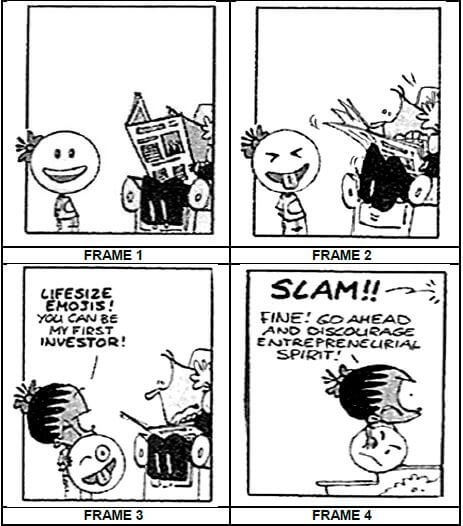ENGLISH FIRST ADDITIONAL LANGUAGE PAPER 1 GRADE 12 QUESTIONS - NSC PAST PAPERS AND MEMOS FEBRUARY/MARCH 2018
Share via Whatsapp Join our WhatsApp Group Join our Telegram GroupENGLISH FIRST ADDITIONAL LANGUAGE
PAPER 1
GRADE 12
NSC PAST PAPERS AND MEMOS
FEBRUARY/MARCH 2018
INSTRUCTIONS AND INFORMATION
- This question paper consists of THREE sections:
SECTION A: Comprehension (30)
SECTION B: Summary (10)
SECTION C: Language (40) - Answer ALL the questions.
- Read ALL the instructions carefully.
- Start EACH section on a NEW page.
- Leave a line after each answer.
- Number the answers correctly according to the numbering system used in this question paper.
- For multiple-choice questions, write only the letter (A–D) next to the question number in the ANSWER BOOK.
- Pay special attention to spelling and sentence construction. 9. Use the following time frame as a guideline:
SECTION A: 50 minutes
SECTION B: 20 minutes
SECTION C: 50 minutes - Write neatly and legibly.
QUESTIONS
SECTION A: COMPREHENSION
QUESTION 1
Read BOTH TEXT A and TEXT B and answer the set questions.
TEXT A
YOUNGSTERS DIVING INTO OCEAN STUDIES
[Adapted from Sunday Times, 5 February 2017] |
1.1 Refer to paragraph 1.
1.1.1 Name TWO factors that influence a learner's career choice. (2)
1.1.2 What advantage do matric learners have regarding career choices? (1)
1.2 Why was the Marine Sciences curriculum developed? Give TWO reasons. (2)
1.3 Refer to paragraph 3.
1.3.1 Quote ONE word to prove that Marine Sciences has not been introduced at all schools. (1)
1.3.2 How is the curriculum for Marine Sciences similar to that of Life Sciences? (1)
1.3.3 Using your own words, explain what is meant by 'the ocean is an unexplored area'. (1)
1.4 Refer to paragraph 5.
1.4.1 Explain why 'Young Biologists' is written in inverted commas. (2)
1.4.2 Why is the following statement FALSE? The 'Young Biologists' were paid during their training. (1)
1.4.3 Choose the correct answer to complete the following sentence:
The words 'flagship course' in line 27 mean that the course is about …
- studying flags.
- being impressive.
- studying ships.
- being supportive. (1)
1.4.4 Why is it important for the course to be 'as hands-on as possible'? (2)
1.5 Refer to paragraph 6.
What do the words, 'continued volunteering' suggest about Shanet Rutgers? (1)
1.6 Explain why the writer has included the following statement:
'Four have been awarded Marine Sciences and Oceanography bursaries so far' (paragraph 7). (2)
1.7 Do marine scientists spend most of their time in the ocean? Give a reason for your answer. (2)
1.8 Give a reason why Marine Sciences should be offered at coastal schools if the curriculum is approved. (1)
1.9 In your view, will this article succeed in motivating learners to study Marine Sciences? Substantiate your answer. (2)
1.10 Discuss the suitability of the title, YOUNGSTERS DIVING INTO OCEAN STUDIES. (2)
TEXT B 
[Source: www.google.com]
Refer to the graph above (TEXT B).
1.11 Complete the following sentence by filling in the missing word. 'Teens' is the abbreviated form of the word ... (1)
1.12 According to the graph, does the cost of making calls influence most teens to text? Give a reason for your answer. (1)
1.13 What does the tallest bar in the graph suggest about teens? (2)
1.14 In your view, is the inclusion of an image of a cellphone suitable in this visual? Substantiate your answer. (2)
TOTAL SECTION A: 30
SECTION B: SUMMARY
QUESTION 2
Listening is an important skill.
Read TEXT C below and list SEVEN points on how to be a good listener.
INSTRUCTIONS
- Your summary must be written in point form.
- List your SEVEN points in full sentences, using no more than 70 words.
- Number your sentences from 1 to 7.
- Write only ONE point per sentence.
- Use your OWN words as far as possible.
- Indicate the total number of words you have used in brackets at the end of your summary.
TEXT C
LISTENING People's evaluation of their listening ability is much like their assessment of their driving skills; they think they are above average. [Adapted from https://hbr.org, 2016] |
TOTAL SECTION B: 10
SECTION C: LANGUAGE
QUESTION 3: ANALYSING AN ADVERTISEMENT
Study the advertisement (TEXT D) below and answer the set questions.
TEXT D 
[Source: Essential, August 2015]
3.1 Name the product being advertised. (1)
3.2 Refer to the headline.
Why is the word, 'Spray', written in a larger font? (1)
3.3 Refer to the visual of a throat.
Why does the advertiser include an image of a thorny stem? (2)
3.4 Refer to the words, 'Antiviral and antibacterial action'.
Complete the sentence with a suitable word:
The underlined part is called a … (1)
3.5 Quote TWO consecutive words to prove that the advertised product is safe to use. (1)
3.6 Why would it be important to know that A.Vogel has been a 'Pioneer in Natural Health – since 1923'? (1)
3.7 How can the reader obtain more information about the advertised product? (1)
3.8 Discuss whether the advertisement would convince you to buy this product. (2) [10]
QUESTION 4: ANALYSING A CARTOON
Read the cartoon (TEXT E) below and answer the set questions.
TEXT E
MADAM AND EVE 
[Source: Pretoria News, 2 July 2016]
Glossary: *emojis − small images or icons used to express ideas, emotions etc. in electronic communication.
NOTE: In this cartoon, the girl is Thandi and the woman is Mother Anderson.
4.1 State ONE visual clue which indicates that Mother Anderson cannot see Thandi. (1)
4.2 What does Thandi do in Frame 2? (1)
4.3 What does Thandi expect from Mother Anderson in Frame 3? (1)
4.4 Refer to Frame 4.
4.4.1 State TWO techniques that the cartoonist uses to show how Mother Anderson closes the door. (2)
4.4.2 Explain how the emoji reflects Thandi's feelings. (2)
4.4.3 Write the word 'entrepreneurial' as a noun. (1)
4.5 Consider the cartoon as a whole and discuss whether Mother Anderson is justified in her actions towards Thandi. (2) [10]
QUESTION 5: LANGUAGE AND EDITING SKILLS
5.1 Read the passage (TEXT F) below, which has some deliberate errors, and answer the set questions.
TEXT F
OLDEST TORTOISE
[Source: Daily News, 26 September 2016] |
5.1.1 Correct the SINGLE error in each of the following sentences. Write down ONLY the question numbers and the words you have corrected.
- He does not look a day older then one hundred. (1)
- But Admiral, the tortoise living at Mitchel Park Zoo, celebrated his 105th birthday resently. (1)
- Admiral arrived at Mitchell Park about 105 years ago, courtesy of a unknown naval officer. (1)
- He has found them in the Seychelles in 1915, according to Mitchell Park archives. (1)
5.1.2 Give the correct form of the word in brackets: Admiral has become a (celebrate) at Mitchell Park. (1)
5.1.3 Choose the correct answer to complete the following sentence: A period of one hundred years is known as a …
- decade.
- century.
- millennium.
- bicentenary. (1)
5.1.4 Study the following sentence and give a synonym for the word 'giant':
He brought three giant tortoises to the park during World War I. (1)
5.1.5 Rewrite the following sentence as a question:
The officer returned to claim his pets. (1)
5.1.6 Rewrite the following sentence in the passive voice:
Admiral entertains children and adults. (1)
5.1.7 Study the following sentence:
He also enjoys a nap in the pond when the weather is hot.
Use a homophone for the word weather in a sentence of your own. (1)
5.1.8 Rewrite the following sentence in reported speech:
She said, 'Admiral is the oldest tortoise in the country now and plays a significant role in drawing tourists to the zoo.' (4)
5.2 Study the text (TEXT G) below and answer the questions.
TEXT G 
[Source: The Citizen, 2 November 2016]
5.2.1 Study the following sentence:
I could supply the answer if you weren't so demanding.
- State the part of speech of both the underlined words. (2)
- Identify the punctuation mark used in the word: weren't. (1)
5.2.2 Provide the correct degree of comparison in the following sentence: Economics is (interesting) than Accounting. (1)
5.2.3 Rewrite the following sentence in the negative form: The students knew the answer. (1)
5.2.4 Complete the following tag question. Write down only the missing words. He teaches Economics, … …? (1) [20]
TOTAL SECTION C: 40
GRAND TOTAL: 80